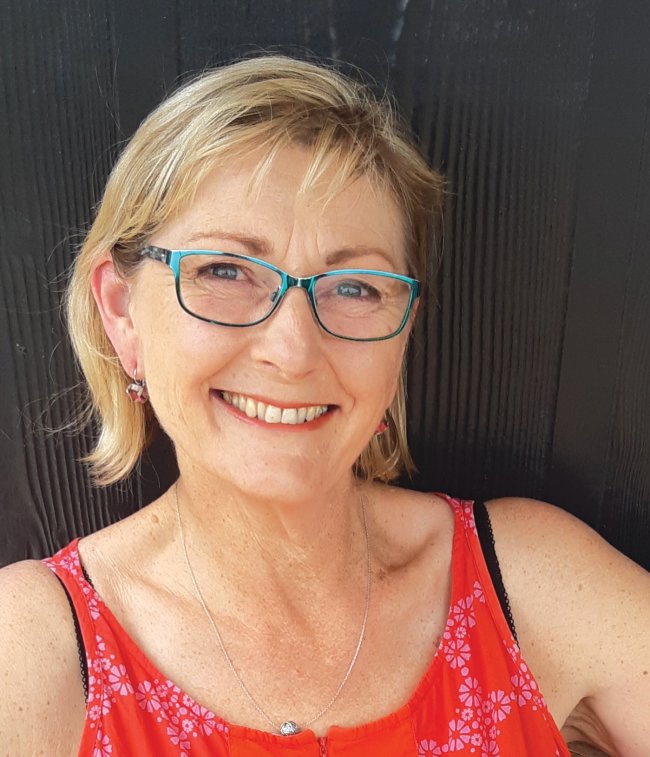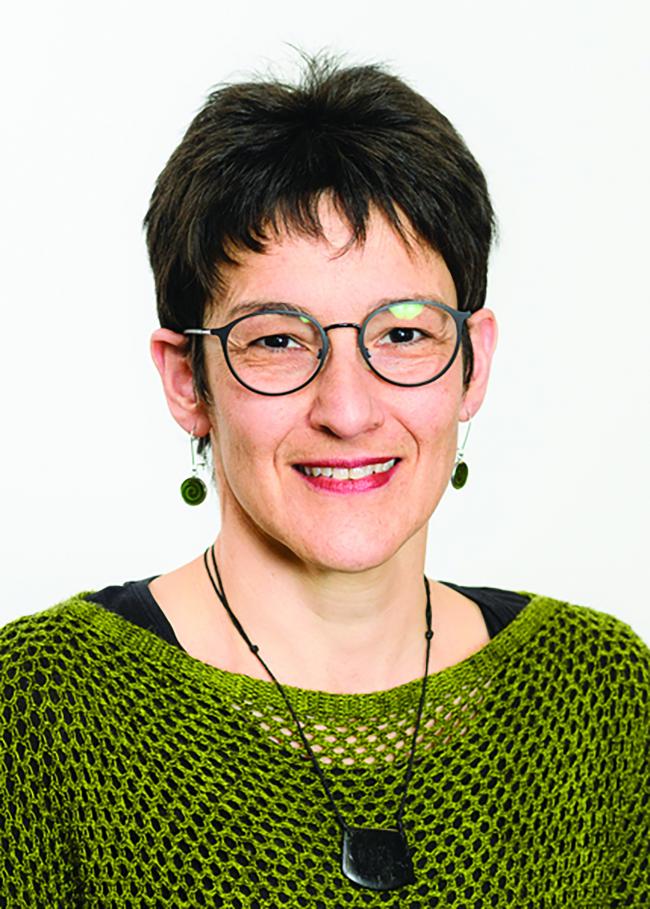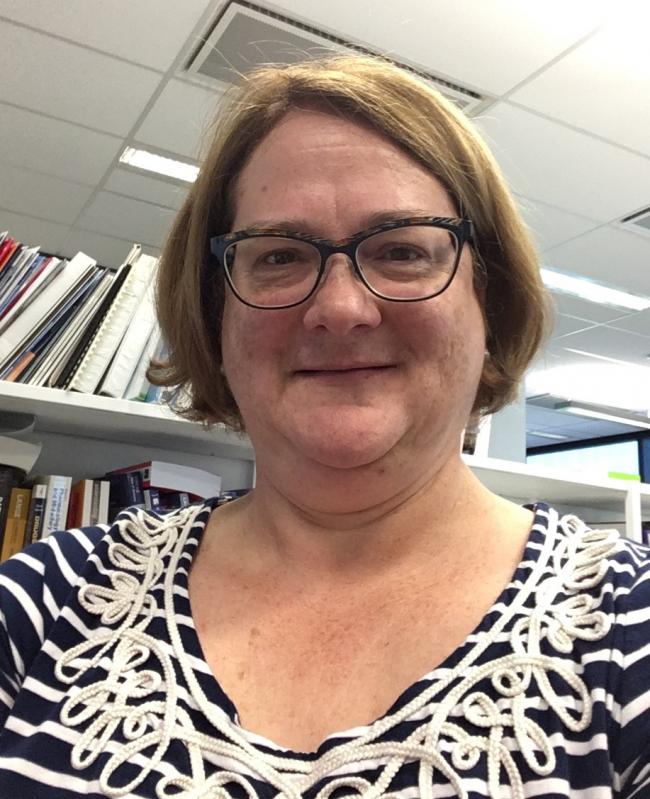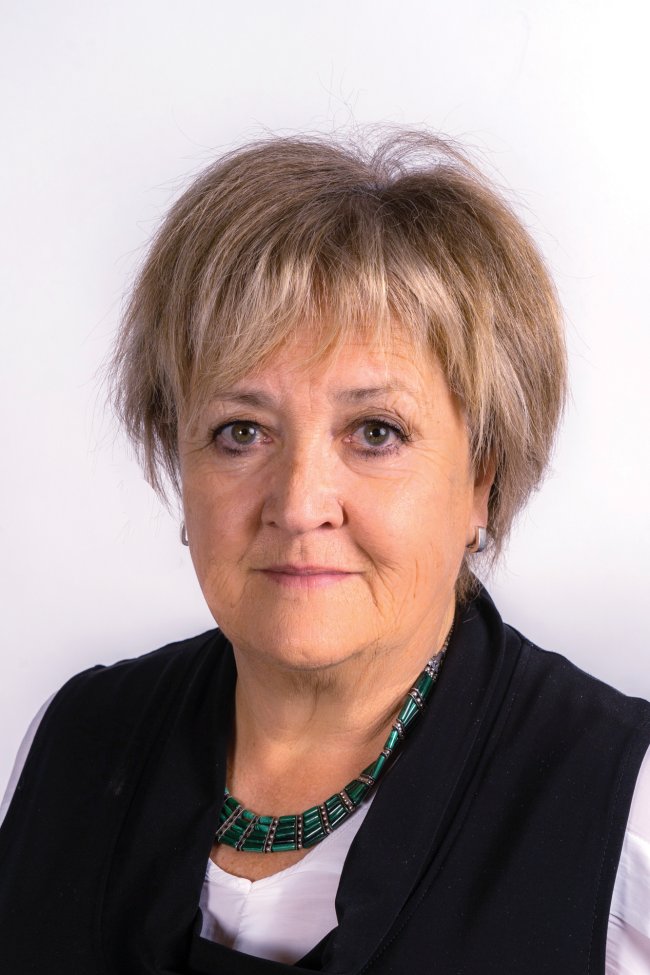Respiratory physician Lutz Beckert considers chronic obstructive pulmonary disease management, including the prevention of COPD, the importance of smoking cessation and pulmonary rehabilitation, and the lifesaving potential of addressing treatable traits. He also discusses the logic of inhaler therapy, moving from single therapy to dual and triple therapy when indicated, as well as other aspects of management
NPs’ value affirmed at 20-year milestone
NPs’ value affirmed at 20-year milestone

We are on our summer break and the editorial office is closed until 17 January. In the meantime, please enjoy our Summer Hiatus series, an eclectic mix from our news and clinical archives and articles from The Conversation throughout the year. This article was first published in the 15 December Summer edition
It’s 20 years since the first nurse practitioner was registered. Now, 500- plus NPs are practising throughout New Zealand. Fiona Cassie looks to the past and the future
2001
- Deborah Harris registers as New Zealand’s first NP.
2003
- Janet Maloney-Moni registers as first Māori NP and first NP in primary healthcare.
2007
- Still fewer than 40 NPs.
- NP model described as “failed” experiment by then Health Workforce New Zealand chair Des Gorman.
2011
- 100th NP registered.
2016
- Pilot of dedicated Nurse Practitioner Training Programme.
- Omnibus bill removing legislative barriers to NPs passed.
2021
- More than 500 registered and practising NPs.
- Training programme expands to 50 funded places a year.
And the NP is, as we hoped, a really fit-for-purpose and quite transformative role
The country’s first nurse practitioner spent far too much time criss-crossing Wellington by taxi, meeting the health decision-makers and urging them to open up opportunities for the role.
Deborah Harris was the country’s only nurse practitioner for a lonely nine months after being registered as a neonatal NP on 11 December, 2001.
You could still count the number of NPs on your fingers in August 2003, when the country welcomed its first primary care and first Māori NP, the late Janet Maloney-Moni.
NPs working in primary care now make up more than half of the country’s 500 NPs, but it took the dogged determination of kaupapa Māori pioneer Ms Maloney-Moni, and others who followed, to get them there.
Dr Harris recalls the Waikato-based pair uniting in their trips to the capital to fight the barriers facing the fledgling role.
“We did a lot of work together, trying very hard to help people understand what the role could do.”
The Nursing Council set tough standards, including expecting NPs to be not only clinically competent but also national leaders and researchers. In the first four years, only 17 of 35 applications were successful.
The small numbers did not help the health sector come to grips with the new role and there was considerable push-back at times.
In 2005, NZMA chair Ross Boswell told the GP CME conference that a “loony proposal” to give NPs greater prescribing rights put the health of New Zealanders at risk.
Meanwhile, NPs like Adrianne Murray in the Far North were working to close healthcare gaps.
On qualifying with a whānau ora scope of practice in 2005, Ms Murray was supported by her Māori provider employer to set up a high-tech campervan to serve isolated communities, largely Māori.
Diane Williams was working in remote East Cape communities when she started her NP journey. Upon registering in 2007, Ms Williams began helping “fill a huge hole” among a high-needs Māori population for Tairāwhiti DHB.
Among her patients was a working man in his 40s with heart failure due to poorly managed rheumatic fever. As an NP, she was able to get him off the waiting list and into hospital.
Ms Williams is now an NP at Marlborough Urgent Care Centre in Blenheim. In the early days, only about half a dozen NPs worked in primary care and she recalls some resistance, but says most GPs she knew were supportive, or came to be so.
“Once they worked with an NP, they were sold on the idea.”
In 2012 came a major change: NPs in primary care could enrol patients and claim capitation funding.
A pioneer of putting this into action was Tania Kemp who, within a year of registering and starting work as an NP in 2012, joined forces with another nurse to buy the Pleasant Point Health Centre from her GP employer.
Mrs Kemp says the centre remains the only NP-owned and run traditional general practice, currently with three NPs and no GPs.
The team often fields queries from NPs, GPs and organisations about how their model works.
“Easier now than at the start” is one answer. Mrs Kemp would send multiple letters to the powers-that-be explaining all the barriers in the way of providing optimal care.
“You kind of felt that you were forever complaining but, actually, at the end of the day, it’s for the benefit of the patient, because the more you’ve got in your kitty, the more services you can provide.”
Change came finally with the Medicines Amendment Act 2016 – “omnibus” legislation updating eight acts to replace references to “medical practitioners” when other practitioners, like NPs, could provide the service. This included signing death certificates and sick leave certificates.
Nurse Practitioner New Zealand chair Sandra Oster says that law, which came into effect in early 2018, did a huge amount to reduce the barriers.
“Things have become substantially more supportive of nurse practitioner autonomous practice,” Ms Oster says. However, NPNZ continues to fight barriers in the way of antenatal care funding and prescribing.
Looking back 20 years, veteran nursing campaigner and College of Nurses Aotearoa executive director Jenny Carryer says the NP role has affirmed the sector’s initial hopes, “that there’s something really valuable about combining a nursing approach with additional – what was traditionally medical – skill and knowledge”.
“And the NP is, as we hoped, a really fit-for-purpose and quite transformative role,” Professor Carryer says.
She is proud that New Zealand is producing NPs who recognise the importance of the socioeconomic determinants of health for their patients.
The NP workforce continues to be mainly European. This year, 42 of the 500-plus practising NPs identify as Māori, or about 8 per cent. Māori nurses make up a similar proportion of the overall nursing workforce.
Most NPs have at least 15 years’ nursing experience behind them and their median age, 52, is six years older than the general nursing workforce.
The youngest NP in primary care is Jess Tiplady, who was 29 when she registered in 2017.
It’s unlikely an NP will register any younger, because of the clinical expertise needed, says Ms Oster.
“A primary healthcare practitioner needs to be able to practise similarly to a GP.”
“We have clinical Master’s education to prepare NPs, but it also requires that time in practice developing clinical expertise with patients.”
The number of NPs working in general practice has been boosted greatly since the piloting in 2016 of 20 places in the dedicated Nurse Practitioner Training Programme, which provides extra funding and clinical support on top of the clinical Master’s.
The pilot now takes on 50 candidates. Between 80 and 90 NP trainees are expected to seek Nursing Council registration at the end of the year.
All registration panels will, for the first time, be chaired by NPs – an “exciting advance”, says Ms Oster.
This milestone anniversary year is expected to close looking forward to a total of more than 600 NPs practising in 2022.
Too much patient need and too little time and funding is a problem shared by all in primary care – and one that nurse practitioners hope the health reforms will tackle.
NP and Pleasant Point Health Centre co-owner Tania Kemp says it’s this dilemma that forces her centre to “rob Peter to pay Paul” to try to cover costs.
The three NPs at the South Canterbury practice work on the GP model of 15-minute patient appointments. Mrs Kemp, the most experienced NP on the team, says she sees the most complex patients and that’s where the model quickly breaks down.
“If the consult is for mental health or a person who doesn’t access care regularly, then you can’t do it in 15 minutes.”
Stretching out to 30 minutes or an hour is how you get a difference in outcomes, says Mrs Kemp. “But that’s totally unfunded as you can only charge for a 15-minute appointment.” This is an issue of equity, as often the people needing the most care have the least money.
Primary care NP Di Williams, who works for the local DHB and PHO-owned Marlborough Urgent Care Centre, says she has similar issues, as the patients coming in aren’t usually known to her.
“Fortunately, I can take more than 15 minutes if needed,” Ms Williams says. “[If] it’s a half-hour or an hour job, I can do that too depending on what’s happening for them.”
But the time-limited funding is an issue nationally, as practices need to pay their bills and their staff, she says.
While she doesn’t know the answer, she says working in teams, patient-centred care and making sure that the right person sees the right patient is the right start.
College of Nurses Aotearoa executive director Jenny Carryer hopes the health reforms will see a primary health model of care where the full range of NP skills can be deployed.
GPs and NPs alike find themselves in a time and business-based stranglehold because of the requirement to see so many people so quickly, says Professor Carryer.
GPs and NPs find it “really, really difficult” to do their jobs the way they’d like to, she says.
Professor Carryer isn’t sure the private business model of general practice is worth holding on to, or can adjust to delivering services in a way that improves issues around access, affordability and distribution.
“I’m hoping that we’re open to forging a way forward in which we think about resourcing the skill set that makes the biggest difference to the most people in an affordable manner.”
Mrs Kemp wants capitation replaced by funding that follows the patient and is based on their socioeconomic and health needs.
We're publishing this article as a FREE READ so it is FREE to read and EASY to share more widely. Please support us and our journalism – subscribe here












![Barbara Fountain, editor of New Zealand Doctor Rata Aotearoa, and Paul Hutchison, GP and senior medical clinician at Tāmaki Health [Image: Simon Maude]](/sites/default/files/styles/thumbnail_cropped_100/public/2025-03/Barbara%20Fountain%2C%20editor%20of%20New%20Zealand%20Doctor%20Rata%20Aotearoa%2C%20and%20Paul%20Hutchison%2C%20GP%20and%20senior%20medical%20clinician%20at%20T%C4%81maki%20Health%20CR%20Simon%20Maude.jpg?itok=-HbQ1EYA)
![Lori Peters, NP and advanced health improvement practitioner at Mahitahi Hauora, and Jasper Nacilla, NP at The Terrace Medical Centre in Wellington [Image: Simon Maude]](/sites/default/files/styles/thumbnail_cropped_100/public/2025-03/2.%20Lori%20Peters%2C%20NP%20and%20advanced%20HIP%20at%20Mahitahi%20Hauora%2C%20and%20Jasper%20Nacilla%2C%20NP%20at%20The%20Terrace%20Medical%20Centre%20in%20Wellington%20CR%20Simon%20Maude.jpg?itok=sUfbsSF1)
![Ministry of Social Development health and disability coordinator Liz Williams, regional health advisors Mary Mojel and Larah Takarangi, and health and disability coordinators Rebecca Staunton and Myint Than Htut [Image: Simon Maude]](/sites/default/files/styles/thumbnail_cropped_100/public/2025-03/3.%20Ministry%20of%20Social%20Development%27s%20Liz%20Williams%2C%20Mary%20Mojel%2C%20Larah%20Takarangi%2C%20Rebecca%20Staunton%20and%20Myint%20Than%20Htut%20CR%20Simon%20Maude.jpg?itok=9ceOujzC)
![Locum GP Helen Fisher, with Te Kuiti Medical Centre NP Bridget Woodney [Image: Simon Maude]](/sites/default/files/styles/thumbnail_cropped_100/public/2025-03/4.%20Locum%20GP%20Helen%20Fisher%2C%20with%20Te%20Kuiti%20Medical%20Centre%20NP%20Bridget%20Woodney%20CR%20Simon%20Maude.jpg?itok=TJeODetm)
![Ruby Faulkner, GPEP2, with David Small, GPEP3 from The Doctors Greenmeadows in Napier [Image: Simon Maude]](/sites/default/files/styles/thumbnail_cropped_100/public/2025-03/5.%20Ruby%20Faulkner%2C%20GPEP2%2C%20with%20David%20Small%2C%20GPEP3%20from%20The%20Doctors%20Greenmeadows%20in%20Napier%20CR%20Simon%20Maude.jpg?itok=B0u4wsIs)
![Rochelle Langton and Libby Thomas, marketing advisors at the Medical Protection Society [Image: Simon Maude]](/sites/default/files/styles/thumbnail_cropped_100/public/2025-03/6.%20Rochelle%20Langton%20and%20Libby%20Thomas%2C%20marketing%20advisors%20at%20the%20Medical%20Protection%20Society%20CR%20Simon%20Maude.jpg?itok=r52_Cf74)
![Specialist GP Lucy Gibberd, medical advisor at MPS, and Zara Bolam, urgent-care specialist at The Nest Health Centre in Inglewood [Image: Simon Maude]](/sites/default/files/styles/thumbnail_cropped_100/public/2025-03/7.%20Specialist%20GP%20Lucy%20Gibberd%2C%20medical%20advisor%20at%20MPS%2C%20and%20Zara%20Bolam%2C%20urgent-care%20specialist%20at%20The%20Nest%20Health%20Centre%20in%20Inglewood%20CR%20Simon%20Maude.jpg?itok=z8eVoBU3)
![Olivia Blackmore and Trudee Sharp, NPs at Gore Health Centre, and Gaylene Hastie, NP at Queenstown Medical Centre [Image: Simon Maude]](/sites/default/files/styles/thumbnail_cropped_100/public/2025-03/8.%20Olivia%20Blackmore%20and%20Trudee%20Sharp%2C%20NPs%20at%20Gore%20Health%20Centre%2C%20and%20Gaylene%20Hastie%2C%20NP%20at%20Queenstown%20Medical%20Centre%20CR%20Simon%20Maude.jpg?itok=Z6u9d0XH)
![Mary Toloa, specialist GP at Porirua and Union Community Health Service in Wellington, Mara Coler, clinical pharmacist at Tū Ora Compass Health, and Bhavna Mistry, specialist GP at Porirua and Union Community Health Service [Image: Simon Maude]](/sites/default/files/styles/thumbnail_cropped_100/public/2025-03/9.%20Mary%20Toloa%2C%20Porirua%20and%20Union%20Community%20Health%20Service%20in%20Wellington%2C%20Mara%20Coler%2C%20T%C5%AB%20Ora%20Compass%20Health%2C%20and%20Bhavna%20Mistry%2C%20PUCHS%20CR%20Simon%20Maude.jpg?itok=kpChr0cc)